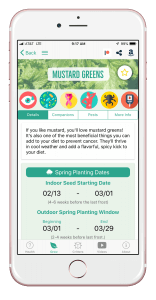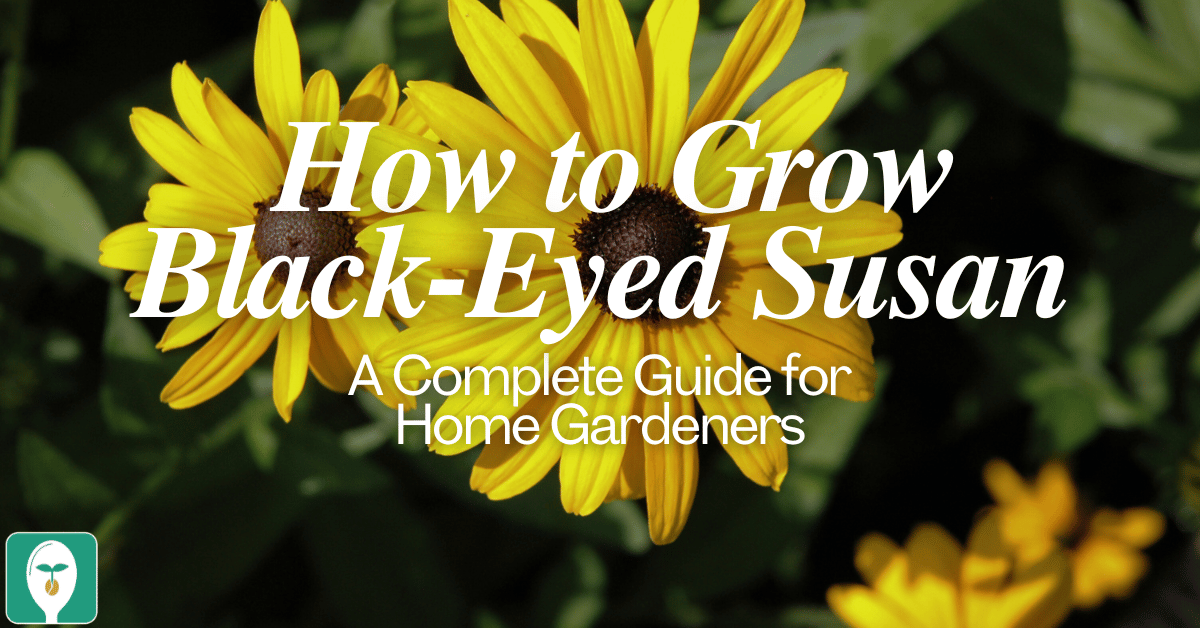How to Grow:
You can plant mustard greens in both the spring and the fall! You can plant directly outdoors 2-4 weeks before your last spring frost and 6-8 weeks before your first fall frost. You can see specific dates for your location using our FREE iOS, Android, and Universal Web App.
Plant mustard seeds 1/4 -1/2 inch deep up to 16 per square foot in the full sun to part shade. Take care to notice what plants are around the area as well, see the companion plant section below. These seeds will begin to sprout in approximately 5-10 days with consistent moisture.
Companion Plants:
Companion planting is a vital part of organic gardening. Companion plants assist in the growth of others by attracting beneficial insects, repelling pests, or providing nutrients, shade, or support. There are also plants that do not like being next to each other. Some plants get too tall and can provide too much shade for your plant. Sometimes certain plants attract the same pests, so it is important to try and separate these. Herbs are especially great companion plants because they help to repel pests from your other plants!
| Good | Bad | |
| Beets | Marigolds | Beans (Bush & Pole) |
| Cabbage | Marjoram | Sunflowers |
| Cantaloupe | Mint | |
| Carrots | Nasturtiums | |
| Catnip | Onions | |
| Cauliflower | Oregano | |
| Chamomile | Peas | |
| Corn | Rosemary | |
| Cucumbers | Sage | |
| Dill | Tarragon | |
| Eggplant | Thyme | |
See companion plants for 80+ foods in our FREE iOS, Android, and Universal Web app!
Pests:
Pests can be one of the most difficult challenges you face in the garden. We strive to grow food without the use of pesticide and luckily there are natural solutions for most of these nasty pests! The pests listed below are common pests for mustard greens:
- Aphids
- Cabbage Loopers
- Cabbage Worms
- Cutworms
- Flea Beetles
- Leaf Miners
- Rabbits
- Root Maggots
- Slugs/Snails
- Thrips
Learn more about how to manage pests and attract beneficial insects in our FREE iOS, Android, and Universal Web App!
Harvesting:
Mustard greens are a fast growing plant! You can begin to harvest in about 21-45 days when they are 6-8 inches long. Pick the leaves on the outside first, and work your way to the inner.
Cooking & Eating!
Learn more about growing over 80+ different foods, including how to manage various pests in our FREE iOS, Android, or new Universal Web App!


Carrie Spoonemore, co-founder of “From Seed to Spoon,” stands as a beacon of inspiration for gardeners and health enthusiasts alike. Her journey alongside her husband, Dale Spoonemore, in creating a platform that demystifies gardening and promotes a healthier lifestyle, has made a significant impact on individuals around the globe. Through the “From Seed to Spoon” app, Carrie has dedicated herself to empowering people to take control of their health and environment by growing their own food.
With a profound belief in the power of gardening to improve mental and physical health, Carrie’s contributions to the Seed to Spoon blog reflect her holistic approach to wellness. Her articles often focus on the nutritional benefits of homegrown fruits and vegetables, organic gardening practices, and the mental health benefits of spending time in nature. Carrie’s expertise in health science shines through in her detailed discussions on how specific plants can contribute to a balanced diet and overall well-being.
Carrie’s passion for gardening is deeply intertwined with her commitment to family and community wellness. She frequently shares personal stories of how gardening has brought her family closer together, offering practical tips for involving children in gardening activities and making it a fun, educational experience. Her writing encourages families to explore gardening as a means of spending quality time together while learning about nature and sustainability.
In addition to gardening advice, Carrie’s contributions to the blog include insights into the use of technology to enhance the gardening experience. She has played a crucial role in designing the “From Seed to Spoon” app to be user-friendly, ensuring that users of all ages and backgrounds can navigate the complexities of gardening with ease. Her vision for the app is not just as a gardening tool but as a vehicle for change, inspiring individuals to adopt a more sustainable lifestyle by growing their own food.
Carrie Spoonemore’s presence on the blog is marked by her compassionate approach to teaching and her unwavering belief in the transformative power of gardening. Her work continues to inspire a community of gardeners to pursue a healthier, more sustainable way of living, proving that with the right tools and knowledge, anyone can become a gardener and advocate for their health and the planet.







12 thoughts on “Mustard Greens: How to Grow and When to Plant in Your Backyard or Patio Garden!”
I do not think of mustard greens as something that is actually ‘grown’. It used to be a very common cover crop. We just went out and took what we wanted. Mustard produced for a very long season, and if we wanted to, we could cut some down in summer so that it would start over and still be making new foliage while the rest were finishing. It seeded before getting cut, so we could get seed if we wanted to as well.
I from Florida . It was widely grown for sale by farmers in my area. It was not used as a cover crop. We used to grow it in the spring and freeze enough to last the year.
It’s best to plant mustard greens around January to April or July to October, depending on where you live and the frost dates of your locality.
Me from Florida. It was grown on a large scale for sale by farmers in my area. It was not used as a cover crop. We used to grow it in spring and freeze it long enough to last year round.
Nhà cái VF555 – Sân chơi cá cược chuyên nghiệp, khuyến mãi cực khủng, trải nghiệm đẳng cấp.